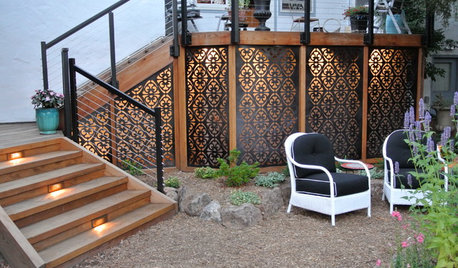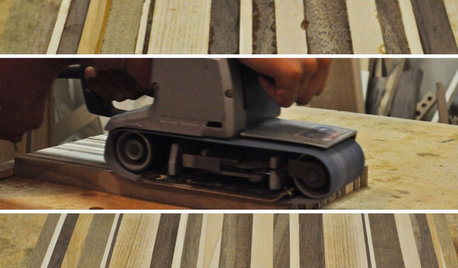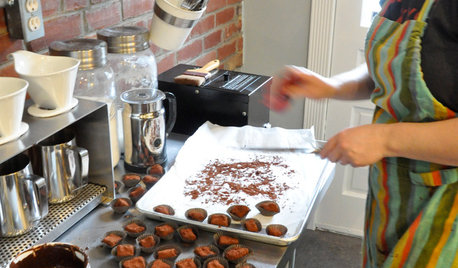WANTED: cutting class
dirtrx
17 years ago
Related Stories

THE ART OF ARCHITECTURELaser-Cut Focus: The Future of Design Is Here
Discover how this laser technology can make almost any pattern a reality
Full Story
HOME OFFICESQuiet, Please! How to Cut Noise Pollution at Home
Leaf blowers, trucks or noisy neighbors driving you berserk? These sound-reduction strategies can help you hush things up
Full Story
DIY PROJECTSFashion a High-Quality Cutting Board From Scrap Wood
Waste not, want not. This DIY project saves scraps from the landfill, hones your woodworking skills and produces a gorgeous kitchen piece
Full Story
KITCHEN STORAGECabinets 101: How to Get the Storage You Want
Combine beauty and function in all of your cabinetry by keeping these basics in mind
Full Story
COMMUNITYWant a Cleaner, Safer Neighborhood? Show You Care
Our behavior strongly influences others, says a new study. Show neighbors you care about your street and watch them follow suit
Full Story
WORKING WITH PROS8 Things Interior Designers Want You to Know
Get the scoop on certifications, project scope, working from afar and more
Full Story
KITCHEN DESIGNLove to Cook? We Want to See Your Kitchen
Houzz Call: Show us a photo of your great home kitchen and tell us how you’ve made it work for you
Full Story
WORKING WITH PROSWhat Do Landscape Architects Do?
There are many misconceptions about what landscape architects do. Learn what they bring to a project
Full Story
FUN HOUZZ10 Things People Really Don’t Want in Their Homes
No love lost over fluorescent lights? No shocker there. But some of these other hated items may surprise you
Full Story
ART10 Things Artists Want You to Know
Inspiration, costs, commissioned work ... 5 artists share on these subjects to paint you a picture of the creative process
Full StoryMore Discussions






trianglejohn
brenda_near_eno
Related Professionals
Accokeek Landscape Architects & Landscape Designers · Willowick Landscape Architects & Landscape Designers · Surprise Landscape Contractors · Lake Zurich Landscape Contractors · Madera Landscape Contractors · Milford Mill Landscape Contractors · Pahrump Landscape Contractors · Pleasant Hill Landscape Contractors · Thornton Landscape Contractors · Chicago Ridge Landscape Contractors · Des Moines Decks, Patios & Outdoor Enclosures · Fairfax Decks, Patios & Outdoor Enclosures · Hyattsville Decks, Patios & Outdoor Enclosures · Medford Decks, Patios & Outdoor Enclosures · Pueblo West Decks, Patios & Outdoor EnclosuresdirtrxOriginal Author
trianglejohn
jeane
dirtrxOriginal Author
trianglejohn